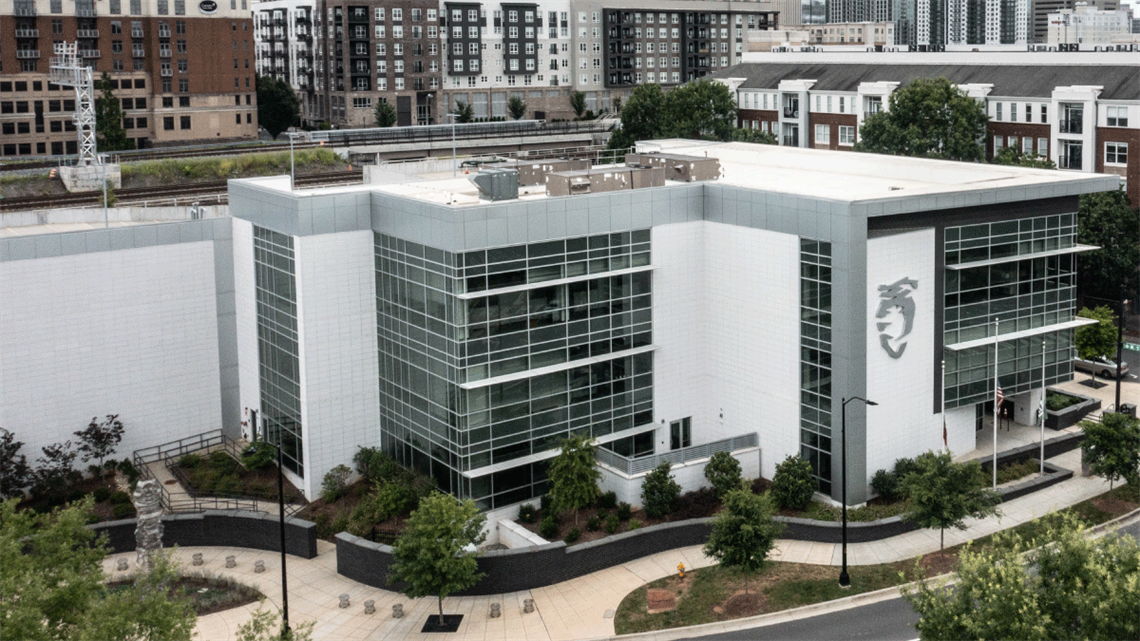City Council Adopts Updates to City Sustainable Facilities Policy
Published on April 23, 2024

Charlotte-Mecklenburg Police Department Central Division station, a Silver level LEED-certified building.
CHARLOTTE, N.C. (April 23, 2024) – In a significant move toward achieving its Strategic Energy Action Plan (SEAP) goals, the Charlotte City Council voted to adopt multiple updates to the Sustainable Facilities Policy (SFP). This update to the SFP reflects the city's commitment to lead globally and by example, integrating new technologies and leveraging ongoing experiences to align with its sustainability objectives.
The SFP, previously adopted in 2021, is a cornerstone of SEAP implementation as it steers city departments toward designing, constructing and operating municipal facilities harmoniously with the city's ambitious 2030 SEAP goal.
A key objective of the SFP update is an intensified focus on decarbonization in buildings. The policy now mandates that all new municipal buildings within the city be powered by electricity, marking a significant shift away from reliance on natural gas.
"With the updated Sustainable Facilities Policy, we are taking decisive steps toward realizing our vision of a sustainable and resilient city," said Mayor Vi Lyles. "This policy underscores our commitment to environmental stewardship and positions us to achieve our SEAP objectives while harnessing financial incentives for clean energy projects."
Through action, the City of Charlotte affirms its dedication to sustainability, and to help residents join the effort to build a more sustainable future, this SFP revision also strategically positions the city to maximize its benefits from federal rebates. Through the Inflation Reduction Act's direct pay program for clean energy projects, city staff will help Charlotteans harness financial incentives to further propel the transition to a cleaner, greener future.
Studies demonstrate that electrification is a core strategy of reducing carbon emissions in buildings. A decarbonization study from the National Renewable Energy Laboratory found that “electrification … can result in a 41% reduction in fossil fuel combustion emissions.” The energy use of our buildings is a leading cause of greenhouse gas emissions that impact the health and climate of our community, so this strategy makes a difference.
Quick Points:
- For new construction, changes to the SFP include requirements for:
- New facilities to be all-electric with no new direct fossil fuels to power buildings except for backup generation.
- HVAC geothermal systems.
- Building automation systems.
- Smart surfaces to reduce energy and heat (cool pavement and roofs).
- Feasibility analysis to determine if a net-zero building is possible.
- For new construction and major renovations, SFP changes include:
- Encouraging the Leadership in Energy and Environmental Design (LEED) Environmental Product Declaration's credit – environmental life cycle assessment.
- Strengthening and expanding on-site solar renewable energy.
- Scoping energy storage systems (battery) to maximize solar energy.
- Pursuing LEED bicycle facility credit for facilities that meet the bicycle network requirement, which supports mode-shift and includes bicycle storage.
- Requiring a periodic analysis for HVAC replacement projects to determine if electrification of systems can occur.